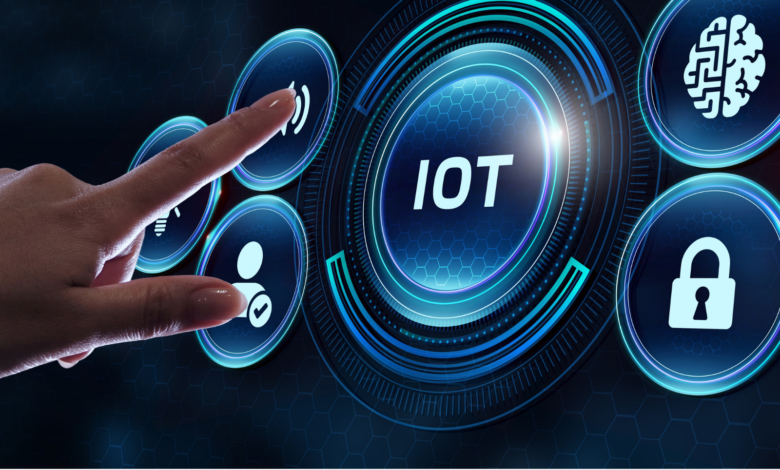How Will IoT Benefit the Transportation and Logistics Industry?

The transportation and logistics industry is a cornerstone of global commerce, responsible for moving goods and products across vast distances efficiently. However, this sector faces numerous challenges, such as rising fuel costs, the need for real-time tracking, and ensuring the integrity of perishable goods like food or medicine. Enter the Internet of Things (IoT) – a transformative technology that is revolutionizing this industry. Through IoT platforms, cold chain monitoring, and real-time analytics, businesses are not only improving their operations but also achieving cost efficiencies and sustainability.
Understanding IoT in Transportation and Logistics
The Internet of Things (IoT) refers to a network of interconnected devices that collect, exchange, and analyze data. IoT platforms serve as the foundation for this network, enabling the integration of various sensors and systems. For the transportation and logistics industry, IoT platforms provide real-time visibility, automation, and intelligent decision-making based on collected data.
Incorporating IoT into transportation and logistics has a broad range of applications, including fleet management, cold chain monitoring, route optimization, and asset tracking. By deploying IoT-enabled sensors, vehicles and shipping containers can now communicate their status, location, and environment to managers in real time, allowing for informed decision-making and quick response to unexpected events.
Key Benefits of IoT for Transportation and Logistics
1. Enhanced Fleet Management
One of the most significant advantages of IoT in transportation is the ability to enhance fleet management. Traditional methods of managing fleets often rely on manual reporting, leading to inefficiencies and delays in critical decision-making. With IoT platforms, transportation companies can monitor vehicle performance, driver behavior, fuel consumption, and maintenance needs in real time.
By leveraging GPS and telematics systems, IoT provides real-time tracking of each vehicle’s location, enabling companies to optimize routes and reduce idle time. Additionally, predictive maintenance becomes possible through IoT-enabled sensors that monitor the health of vehicles, minimizing unplanned downtime and reducing repair costs.
For instance, sensors can alert managers when tire pressure is low or when an engine needs servicing, preventing accidents and improving vehicle longevity. Moreover, driver behavior such as harsh braking, speeding, and excessive idling can be tracked to promote safer driving practices and reduce fuel consumption.
2. Cold Chain Monitoring for Temperature-Sensitive Goods
Cold chain monitoring is essential in industries that deal with temperature-sensitive goods, such as pharmaceuticals, food, and chemicals. The integrity of these products can be compromised if they are exposed to temperatures outside the optimal range during transport. IoT platforms play a pivotal role in monitoring and managing these conditions, ensuring that products arrive at their destination in perfect condition.
IoT-enabled sensors inside refrigerated vehicles or containers continuously monitor temperature, humidity, and other environmental factors. If the conditions deviate from the required parameters, an alert is sent to the logistics team, enabling immediate action to correct the situation. This level of monitoring helps reduce spoilage, waste, and the risk of regulatory non-compliance.
For example, in the pharmaceutical industry, IoT-based cold chain monitoring ensures that vaccines and medicines are stored at the right temperatures throughout the supply chain, protecting their efficacy and patient safety. Similarly, in the food industry, it prevents spoilage of perishable goods, reducing food wastage and ensuring compliance with food safety regulations.
3. Improved Route Optimization and Fuel Efficiency
Transportation companies are always looking for ways to reduce fuel consumption and lower operational costs. IoT offers a solution through real-time data collection and analysis. By tracking the location of vehicles and analyzing traffic conditions, IoT platforms enable route optimization, ensuring that drivers take the most efficient paths to their destinations.
With real-time route updates, logistics managers can avoid traffic congestion, road closures, or hazardous weather conditions, reducing the time spent on the road. This not only saves fuel but also improves delivery times, enhancing customer satisfaction. Furthermore, IoT devices that monitor fuel consumption provide insights into fuel efficiency, allowing fleet operators to adjust driving patterns and maintenance schedules to conserve fuel.
4. Increased Transparency and Real-Time Tracking
In today’s fast-paced logistics environment, real-time tracking is crucial for both businesses and customers. IoT-enabled tracking systems offer full visibility into the location and status of shipments at all times. This transparency is particularly valuable for logistics companies managing high-value or time-sensitive goods.
With IoT sensors attached to vehicles and shipping containers, logistics managers can monitor the movement of goods throughout the supply chain. This real-time data not only enables companies to ensure timely deliveries but also provides customers with up-to-date information about the status of their shipments. In the event of delays or disruptions, companies can proactively inform customers, improving communication and trust.
Moreover, IoT platforms allow for better inventory management by providing accurate, real-time data on stock levels. This ensures that warehouses are adequately stocked, preventing overstocking or stockouts, and enabling just-in-time inventory strategies.
5. Enhanced Safety and Compliance
Safety and regulatory compliance are critical in the transportation and logistics industry. IoT helps improve safety by monitoring the condition of vehicles and cargo. Sensors can detect potential safety hazards, such as engine malfunctions, tire pressure issues, or even driver fatigue.
By using IoT data, companies can also comply with regulatory requirements more efficiently. For example, IoT platform enable automatic logging of driving hours, ensuring compliance with government regulations on driver work hours. Furthermore, in industries like pharmaceuticals and food, cold chain monitoring ensures compliance with stringent temperature and storage regulations.
6. Reduction in Operational Costs
The combination of predictive maintenance, route optimization, and efficient fuel usage leads to significant cost reductions for transportation companies. Predictive maintenance powered by IoT sensors helps avoid costly repairs by addressing issues before they become major problems. Additionally, by optimizing routes and reducing idle time, companies can lower fuel consumption and minimize wear and tear on vehicles.
Cold chain monitoring also contributes to cost savings by preventing the spoilage of temperature-sensitive goods, reducing the financial losses associated with wasted products. Overall, the operational efficiencies gained through IoT implementation translate into better profit margins for transportation and logistics companies.
Challenges of IoT Implementation in Transportation and Logistics
While IoT offers numerous benefits, its implementation is not without challenges. One significant hurdle is the cost of adopting IoT technologies, which includes investing in sensors, IoT platforms, and the necessary infrastructure. However, as IoT technology matures and becomes more widespread, these costs are expected to decrease, making it more accessible to businesses of all sizes.
Data security and privacy concerns also need to be addressed. The vast amount of data collected by IoT devices must be secured to prevent unauthorized access or breaches. Transportation companies must invest in robust cybersecurity measures to protect sensitive data related to shipments, vehicles, and customer information.
Lastly, integrating IoT systems with existing infrastructure and legacy systems can be a complex process, requiring careful planning and collaboration with IoT experts.
Conclusion
The transportation and logistics industry is poised to benefit immensely from the adoption of IoT platforms and technologies like cold chain monitoring. From enhancing fleet management and optimizing routes to ensuring the safety of temperature-sensitive goods, IoT offers solutions to many of the industry’s most pressing challenges. Despite the hurdles associated with implementation, the long-term benefits of improved operational efficiency, cost savings, and customer satisfaction make IoT an essential technology for the future of transportation and logistics.
As IoT continues to evolve, businesses that embrace this technology early will gain a competitive edge, driving success in an increasingly connected world.





